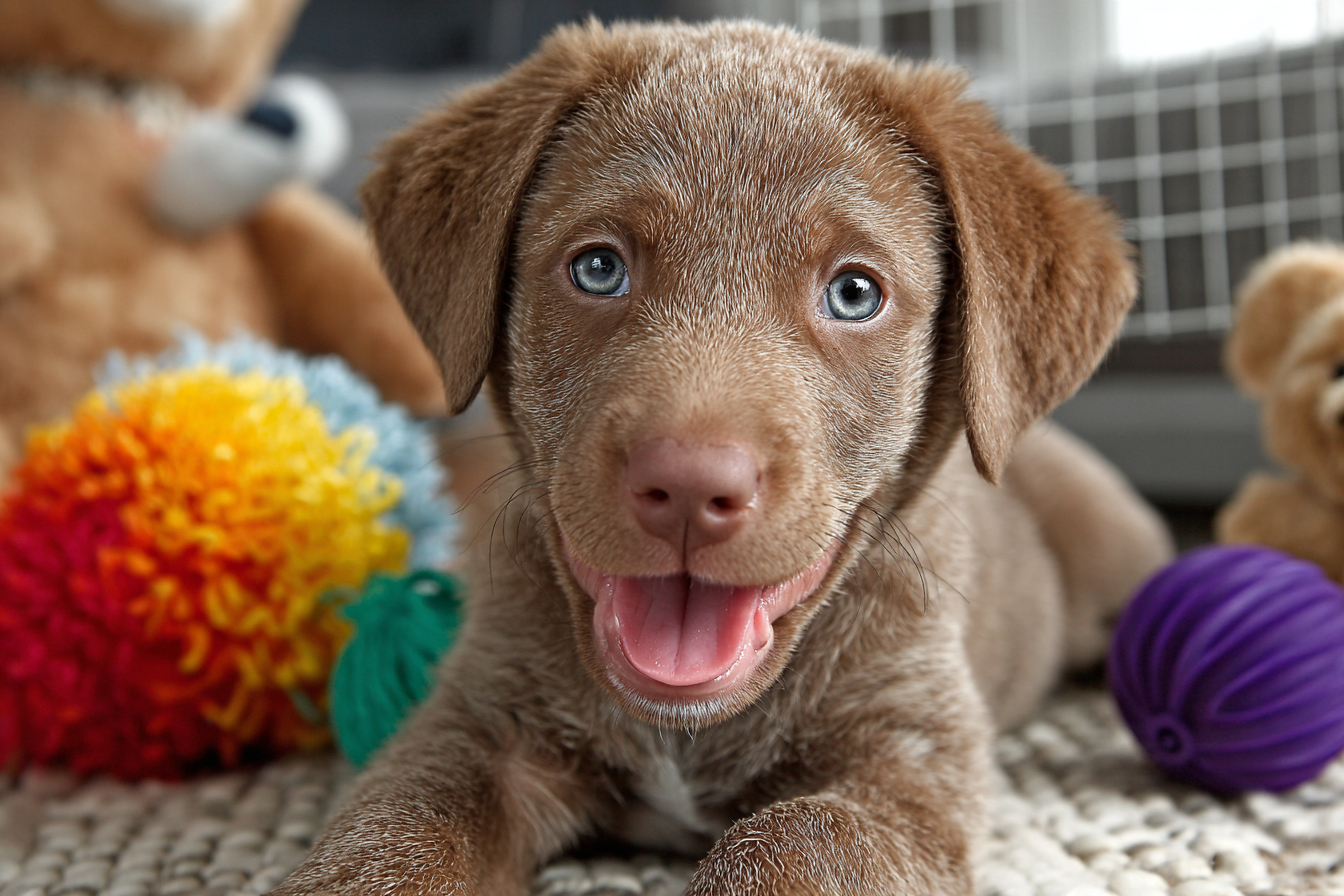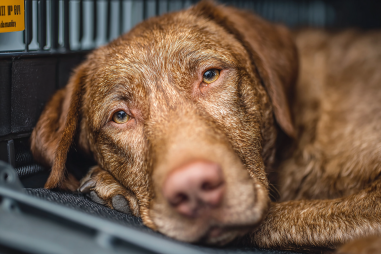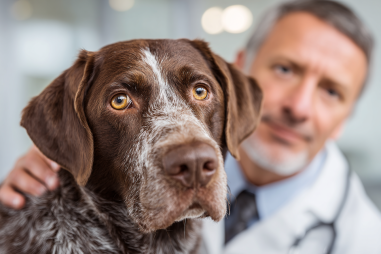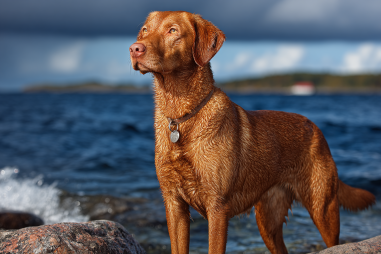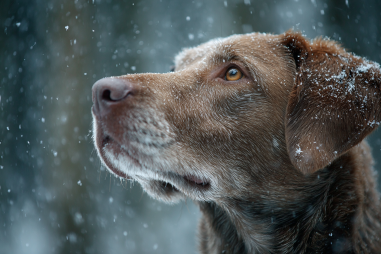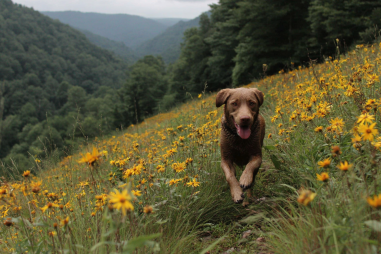Bringing home a Chesapeake Bay Retriever puppy is an exciting adventure filled with joy and the promise of many wonderful years together. However, caring for a Chesapeake puppy comes with unique responsibilities and challenges that require your attention and preparation. Known for their intelligence, loyalty, and energetic nature, Chesapeake Bay Retrievers thrive best when given proper care, socialization, and training from an early age. In this article, we’ll cover practical and essential tips that will help you raise a happy, healthy, and well-mannered Chesapeake Bay Retriever puppy.
Preparing Your Home for a Chesapeake Puppy
Before your Chesapeake Bay Retriever puppy arrives, making your home puppy-proof and comfortable is crucial. This breed is curious and quite active, so safeguarding your living space will protect your new furry friend and your belongings.
Start by removing or securing any hazardous items such as electrical cords, small objects that could be swallowed, and toxic plants or chemicals. Designate a safe, quiet area where your puppy can retreat to rest and relax, preferably equipped with a cozy bed or mat. Providing toys designed for chewing helps satisfy their natural urge to gnaw and keeps destructive behaviors at bay. Additionally, ensure you have the right puppy supplies ready, including food and water bowls, a collar and leash, crate or playpen for confinement, and grooming tools suited to the breed’s thick, water-resistant coat.
Feeding Guidelines and Nutrition
Proper nutrition is fundamental to your Chesapeake puppy’s growth and development. Feeding a high-quality puppy food formulated for medium to large breeds will provide the right balance of protein, fats, vitamins, and minerals. Chesapeake Bay Retrievers are muscular and energetic dogs, so nutritious meals help them build strong bones and maintain energy levels.
Generally, puppies should be fed three to four times daily, gradually reducing portions and meal frequency as they grow. Always follow the feeding guidelines on your puppy food packaging but be ready to adjust portions based on your veterinarian’s advice and your puppy’s weight and activity level. Fresh water should always be available. Avoid feeding human food or table scraps, as these can unbalance their diet and lead to health problems.
Establishing a Grooming Routine
Chesapeake Bay Retrievers have a dense, waterproof double coat that protects them from harsh weather. Regular grooming not only keeps their coat healthy and shiny but also offers a chance to bond with your puppy and monitor their health.
Brushing your Chesapeake puppy’s coat once or twice a week helps remove loose hairs and dirt while preventing mats and tangles, especially during shedding seasons. Use a slicker brush or a firm bristle brush suitable for their coat type. Bathing should be done occasionally—every couple of months or when the puppy is particularly dirty—using a dog-specific shampoo to preserve natural oils.
Don’t forget about nail trimming, ear cleaning, and dental care as part of your grooming routine. Trimming nails every few weeks prevents discomfort and injury. Clean ears regularly to avoid infections, especially since Chesapeake Retrievers have slightly folded ears where moisture can accumulate. Finally, incorporate daily teeth brushing with canine toothpaste to maintain oral hygiene and prevent dental issues down the road.
Early Socialization and Training Essentials
Socialization and training are vital to raising a well-adjusted Chesapeake Bay Retriever. These intelligent and sometimes strong-willed dogs respond best to consistent, positive reinforcement techniques from an early age.
Expose your puppy to a variety of environments, people, animals, and sounds to build confidence and prevent fearfulness. Puppy kindergarten classes or organized social events can be excellent places to start. Obedience training should begin promptly; teach basic commands like sit, stay, come, and leash walking. Crate training can also be beneficial for housebreaking and providing a secure space.
Remember, patience and gentle encouragement work better than harsh punishment. Keeping training sessions short, fun, and rewarding helps maintain your puppy’s interest and build a strong bond between you.
Vaccination and Vet Care Schedule
Health care is a cornerstone of responsible puppy ownership. A well-planned vaccination and veterinary care schedule ensures your Chesapeake Bay Retriever puppy stays protected from common diseases and develops properly.
Generally, puppies receive a series of vaccines starting at about six to eight weeks of age, with boosters every three to four weeks until they are around 16 weeks old. These vaccines typically include protection against distemper, parvovirus, adenovirus, rabies, and other illnesses. Your veterinarian will tailor the vaccination plan based on your location and your puppy’s specific needs.
Regular check-ups are important to monitor growth, administer deworming treatments, and evaluate overall health. Discuss flea and tick prevention options with your vet. Additionally, microchipping is recommended for identification and safety.
Housebreaking and Behavior Management
Housebreaking your Chesapeake Bay Retriever puppy requires consistency, patience, and a good routine. Establish a regular schedule for bathroom breaks and praise your puppy immediately after they eliminate outside. Crate training can facilitate this process by encouraging puppies to hold their bladder since they tend not to soil their sleeping area.
Address unwanted behaviors early on with positive reinforcement shaping better habits rather than punishment. Chesapeake Bay Retrievers need mental and physical stimulation to avoid boredom-driven behaviors such as chewing, digging, or excessive barking. Providing adequate exercise, interactive toys, and training challenges can keep your puppy engaged and happy.
Setting boundaries and clear rules will also help your puppy learn what is expected with clear communication and consistent enforcement. Socialization plays a role here too, as puppies exposed to different people and dogs tend to be more well-behaved and adaptable as they grow.
Enjoying the Journey with Your Chesapeake Bay Retriever Puppy
Caring for a Chesapeake Bay Retriever puppy can be a deeply rewarding experience when you are equipped with the right knowledge and preparation. By creating a safe environment, providing balanced nutrition, maintaining grooming, committing to socialization and training, staying on top of health care, and managing behavior positively, you’ll set your puppy on a path toward a long, healthy, and happy life.
Remember, every puppy is unique, and building a loving relationship filled with trust and understanding is just as important as following these practical tips. For more detailed advice, dog owners’ groups, breed-specific clubs, and your trusted veterinarian are valuable resources to support you on this wonderful journey.

